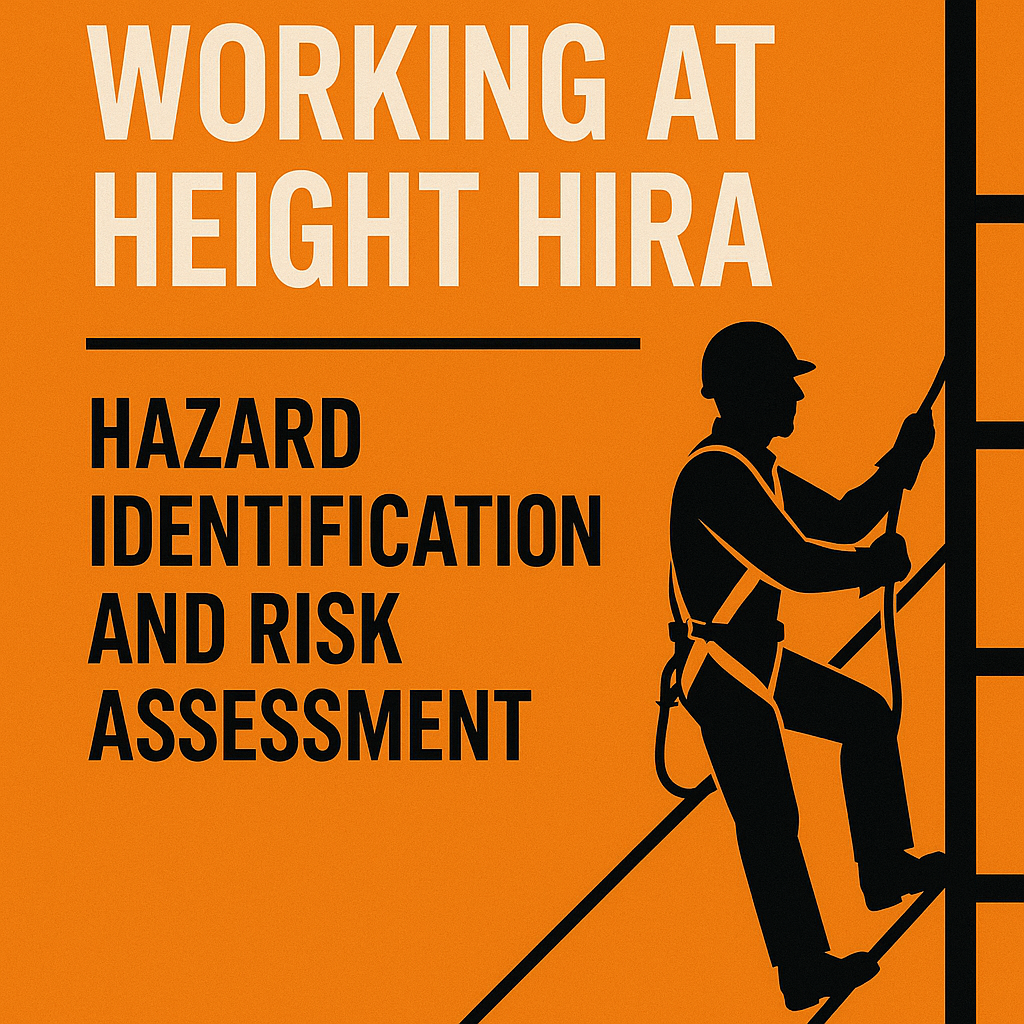
Working at Height HIRA (Hazard Identification and Risk Assessment)
“Working at Height” refers to any activity where a person could fall from one level to another, causing injury or death. It includes tasks carried out on ladders, scaffolds, rooftops, platforms, and elevated structures. Due to the serious risk of falls, it is one of the leading causes of workplace injuries and fatalities worldwide.
A thorough HIRA for Working at Height is essential to control associated risks and ensure the safety of workers engaged in elevated tasks.
Objective of Working at Height HIRA
- To systematically identify hazards related to working at height.
- To evaluate the risks using a standardized risk matrix.
- To implement practical control measures to minimize risk.
- To ensure compliance with legal standards and promote a safe working culture.
Scope
This HIRA applies to all working-at-height activities, including:
- Scaffolding and ladder work
- Roof access and maintenance
- Work on towers, poles, or tanks
- Elevated platform or MEWP (Mobile Elevated Work Platform) operations
- Steel erection and structural work
- Maintenance on tall structures
Step-by-Step HIRA for Working at Height
1. Activity Description
Performing work at a location where a person could fall and suffer serious injury or death. This includes accessing or working above 1.8 meters (6 feet) without suitable edge protection or fall prevention systems.
2. Hazard Identification Table
| S. No. | Hazard | Potential Effects | Persons at Risk |
|---|---|---|---|
| 1 | Fall from height (platform, ladder, edge) | Fractures, head injury, fatality | Workers, supervisors |
| 2 | Collapse of scaffold or platform | Crush injuries, fatalities | Scaffold users, ground staff |
| 3 | Falling tools or materials | Head injury, eye injury | People below the work area |
| 4 | Slips/trips due to weather, surface | Minor to major injuries | Elevated workers |
| 5 | Improper use of PPE (harness, lanyard) | Increased injury risk | Workers |
| 6 | Lack of proper anchorage or guardrails | Fall hazard | Elevated workers |
| 7 | Electrocution from overhead lines | Burns, death | Workers using metal equipment |
| 8 | Fatigue due to prolonged standing | Loss of balance, fall | Workers at height |
| 9 | Manual handling at height | Strain, loss of balance | Technicians, installers |
| 10 | Untrained personnel performing height work | Unsafe practices | Workers, co-workers |
3. Risk Assessment Using Matrix
Risk Rating Formula:
Risk Rating (RR) = Likelihood (L) × Severity (S)
| Hazard | Likelihood (L) | Severity (S) | Risk Rating (RR) | Risk Level |
|---|---|---|---|---|
| Fall from height | 4 | 5 | 20 | Critical |
| Scaffold/platform collapse | 3 | 5 | 15 | High |
| Falling objects | 3 | 4 | 12 | High |
| Slippery or unstable surface | 4 | 3 | 12 | High |
| Improper PPE use | 3 | 4 | 12 | High |
| Inadequate fall protection | 3 | 5 | 15 | High |
| Electrical hazards | 2 | 5 | 10 | High |
| Fatigue at height | 3 | 3 | 9 | Medium |
| Manual handling at height | 3 | 2 | 6 | Medium |
| Untrained workers | 3 | 4 | 12 | High |
4. Control Measures
Engineering Controls:
- Use of certified full-body harness and double lanyards.
- Installation of guardrails or edge protection systems.
- Use of mobile elevated work platforms (MEWPs) with fall arrest equipment.
- Provide toe boards and netting to prevent falling tools.
- Install temporary anchor points and horizontal life lines.
Administrative Controls:
- Permit to Work (PTW) system for working at height.
- Display warning signs and barricade the drop zones.
- Conduct toolbox talks on fall hazards before starting work.
- Assign competent supervisors to monitor height work.
- Conduct wind and weather condition checks.
Personal Protective Equipment (PPE):
- Full body harness with shock-absorbing lanyard.
- Safety helmet with chin strap.
- Non-slip safety footwear.
- Gloves with good grip.
- High-visibility vests.
5. Safe Work Procedure (SWP)
Pre-Work Phase:
- Conduct Job Hazard Analysis (JHA) and HIRA.
- Inspect all PPE and access equipment.
- Ensure the PTW is issued and signed.
- Secure area below with danger tape or barricades.
- Ensure all personnel are trained and fit for height work.
During Work at Height:
- Always use fall protection when exposed to edge or open side.
- Maintain 3-point contact when using ladders.
- Avoid overreaching; reposition ladder or platform if necessary.
- Do not carry tools by hand; use tool belts or hoist bags.
- Constantly monitor for changing weather or surface conditions.
After Work Completion:
- Carefully descend from height using approved methods.
- Remove tools, debris, and loose materials from platform.
- Close PTW and report any incidents or near misses.
- Store PPE properly and record any defects.
6. Emergency Preparedness
- Develop a fall rescue plan specific to each work zone.
- Keep rescue equipment (tripod, rope, harness, stretcher) on-site.
- Train workers in suspended person rescue techniques.
- Ensure quick access to emergency services and first aid.
- Conduct mock rescue drills regularly.
7. Roles and Responsibilities
| Role | Responsibility |
|---|---|
| HSE Officer | Verify risk controls, conduct inspections, approve PTW |
| Supervisor | Assign trained workers, oversee safety compliance |
| Worker | Wear PPE, follow SWP, report unsafe conditions |
| Scaffold Inspector | Certify scaffold safety and stability |
| Emergency Team | Carry out fall rescue operations as needed |
| Safety Trainer | Deliver working at height safety training |
Summary of Recommendations
- Always wear a harness and use double lanyards on elevated surfaces.
- Ensure edge protection or guardrails are installed wherever possible.
- Use only trained and competent workers for height-related jobs.
- Implement a Permit to Work (PTW) system.
- Barricade drop zones to protect ground workers from falling tools.
- Conduct daily inspections of scaffolds and platforms.
- Never work at height during adverse weather conditions (wind, rain).
- Keep rescue equipment and rescue plan ready at all times.
Monitoring and Review
- Weekly audits by safety team on working at height practices.
- Incident and near-miss analysis for continuous improvement.
- Daily visual checks of platforms and PPE.
- Periodic training refreshers and certifications for height workers.
- Update HIRA if method of access, equipment, or task changes.
Conclusion
Working at height is a high-risk activity that requires rigorous planning, strict control measures, and constant vigilance. By applying a structured HIRA process, organizations can significantly reduce the risk of accidents, protect their workforce, and meet legal obligations.
With the right combination of engineering solutions, administrative protocols, and competent supervision, working at height can be carried out safely and efficiently.
Excavation Work HIRA (Hazard Identification and Risk Assessment)
What is a Job Safety Analysis (JSA)? Format, Benefits & Examples
Understanding the Hierarchy of Controls in Workplace Safety
Types of Hazards in the Workplace: Physical, Chemical, Biological, Ergonomic, and More
What is Risk Assessment? Step-by-Step Guide with Real Examples

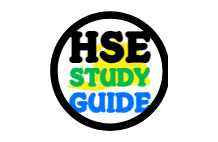
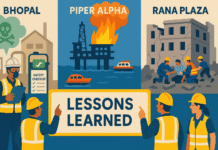
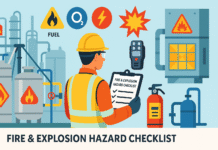
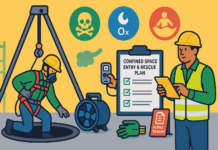




















Fire risk assessment